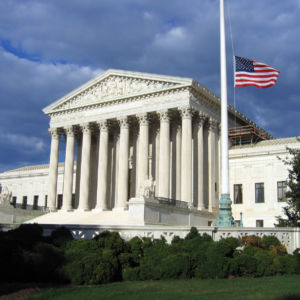Of the many potential consequences of the death of Supreme Court Justice Antonin Scalia, one may be the survival of the Environmental Protection Agency’s carbon emission rules (the Clean Power Plan). While it seems unlikely that the court, presumably now divided 4-4, would lift the stay, the balance on the court will shift if President Obama or a Democratic successor appoints Scalia’s replacement.
Of course there is no assurance how the justices would vote on the merits, but there seems little doubt that the Clean Power Plan has better prospects without Justice Scalia on the court.
When the stay was issued the reactions were not surprising. Environmentalists were outraged. Industry plaintiffs and the 27 state attorneys general who filed the pending lawsuit were delighted.
The editorial boards of two of the nation’s leading newspapers were similarly divided. The Wall Street Journal praised the court’s order as a declaration that “the Court won’t allow … deliberate gaming of the slow pace of the legal process to become de facto immunity for anything the EPA favors.” The New York Times found the order “deeply disturbing” for raising “serious doubts about America’s ability to deliver on Mr. Obama’s pledge in Paris in December to sharply reduce carbon emissions” and for reinforcing “the belief among many Americans that the court is knee-deep in the partisan politics it claims to stand above.”
That Justice Scalia’s death might save the EPA rules from Supreme Court invalidation underscores that the Journal has the better argument. How the court rules should turn on the law, not on the policy preferences of a majority of justices.
If there is a good chance that the EPA has exceeded its authority to the future detriment of the plaintiffs, the harm should be prevented before it occurs, particularly if it cannot be remedied later. America’s ability to deliver on promises made by President Obama is irrelevant to the legal issues pending before the D.C. Circuit Court of Appeals.
The industry and states challenging the Clean Power Plan contend that the EPA lacks the requisite statutory and constitutional authority. Whatever the courts ultimately determine that authority to be, presidential promises cannot expand it. The constitutional separation of powers would be meaningless if presidents could acquire new powers simply by making promises on which others might rely.
That such incremental expansions of executive power, even in the name of purported urgency, should be declared unlawful by the courts was made clear over 60 years ago when the Supreme Court declared unconstitutional President Harry Truman’s seizure of the nation’s steel mills during the Korean War. Justice Felix Frankfurter wrote that “the accretion of dangerous power does not come in a day. It does come, however slowly, from the generative force of unchecked disregard of the restrictions that fence in even the most disinterested assertion of authority.”
As for the Times’ other concern, we should worry if Americans have come to believe that our Supreme Court is “knee-deep in partisan politics.” But the fact that five “conservative” justices favored the stay is no more evidence of judicial partisanship than is the fact that four “liberal” judges opposed the stay. Not until the Supreme Court rules on the merits, if it does, can we know why individual justices believe the Clean Power Plan is or is not within EPA’s authority.
There may be persuasive legal arguments on both sides, but if the justices (or the judges on the D.C. Circuit) make the sort of policy arguments proffered by the Times they will have strayed beyond their constitutional role. That cutting emissions from the regulated power plants “is the backbone of Mr. Obama’s larger goal of reducing greenhouse gas emissions”; that “states can … convert to cleaner-burning natural gas, build renewable-energy sources, like wind and solar, or enter into regional ‘cap and trade’ programs”; or that a “clear majority of Americans, including many Republicans, agree that global warming is or will soon be a serious threat,” as the Times argues, has nothing to do with whether EPA has authority to impose the challenged regulations.
It is certainly true that Supreme Court rulings often are divided with the “conservatives” on one side and the “liberals” on the other side. The same often can be said about divided circuit court rulings and splits between “conservative” and “liberal” circuits. If these divisions are rooted in politics rather than honest disagreements about the law, we have a serious problem. And it will not do for judges to rest their differences in competing understandings of the judicial role. The role of the judge is as much a question of law as is the authority of the EPA.
If political partisanship explains the Supreme Court’s stay of the Clean Power Plan regulations as the Times contends, we all should be concerned for the rule of law. But it does not follow that the “conservatives” on the court are partisans and the “liberals” are not. It only means that, until last weekend, the conservatives had more votes.

